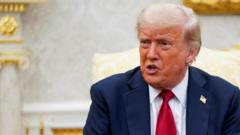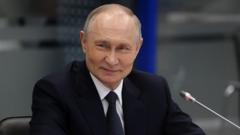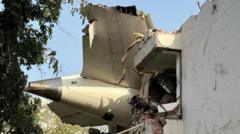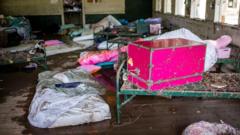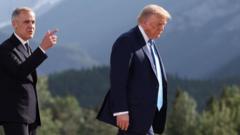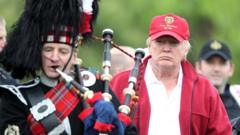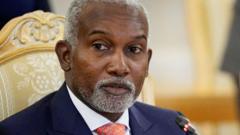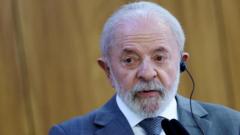As discussions unfold about the future of the presidential jet, we take a closer look at life aboard the current Air Force One, examining its features and maintenance challenges.
New Era on the Horizon for Air Force One: Inside the Presidential Jet
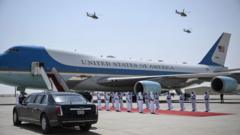
New Era on the Horizon for Air Force One: Inside the Presidential Jet
The iconic Air Force One may soon see a luxurious transformation following Qatar's ambitious offer to provide a state-of-the-art aircraft.
Most journalists accompanying the US president have limited access to the inner workings of Air Force One, often relegated to a simple press cabin at the rear of the aircraft. However, reaching the presidential suite at the front requires navigating through the agency of the Secret Service next door.
During Donald Trump's recent trip to the Middle East, the prospect of a new Air Force One became a hot topic among officials and media. While Fox News host Sean Hannity enjoyed prime seating and a chance to interview the president, the rest of us remained in our confined quarters. It was a fast-paced trip, spanning three nations over three nights—a challenge for both the entourage and the accompanying reporters.
Despite its limitations, Air Force One provides a comfortable flying experience. With 14 first-class seats, onboard amenities include a private bathroom and snack options, featuring exclusive Air Force One-branded M&Ms. There are even television monitors, often tuned to cable news (CNN during Biden's term; Fox News for Trump), and sometimes sports events.
Trump's enthusiasm about potentially accepting a new "palace in the sky" from Qatar—valued at $400 million—has sparked excitement, but it raises significant legal and ethical questions. The term "Air Force One" technically applies to any Air Force aircraft with the president aboard; however, the visually iconic model is the 747-200b that has been flying since the early 1990s. This model reflects design choices made by Jackie Kennedy in the 1960s, yet it is beginning to show its age.
Currently, two 747s serve in the Air Force's presidential fleet; maintaining them is becoming increasingly expensive as their age becomes apparent. Trump, who previously owned his own airline, expressed annoyance about flying in an outdated aircraft, hoping for the delivery of new models—initially scheduled for 2021—despite delays that might push their arrival beyond his presidency term.
While the potential gift from Qatar excites Trump, the retrofitting of such an aircraft for American presidential use involves substantial technical challenges, including accommodating secure communications and safety systems that can withstand severe threats. Analysts speculate that upgrades could be costly and time-consuming, possibly running upwards of $1 billion and extending into 2030.
Historically, the current Air Force One jets have played crucial roles during significant events, such as hosting presidents who addressed the nation in crisis or used the aircraft for campaigning purposes. Recently, military escorts supported Air Force One as it traversed the skies above the Middle East during Trump’s diplomatic engagements.
Though aging, the significance of Air Force One as a symbol of America’s presidential authority cannot be overstated. Aviation experts remind us that the aircraft primarily serves as a flying command center rather than a luxury vehicle for unrivaled opulence.





